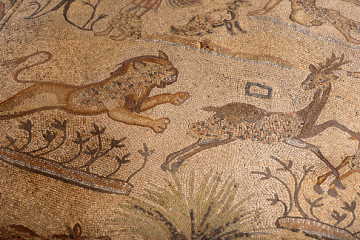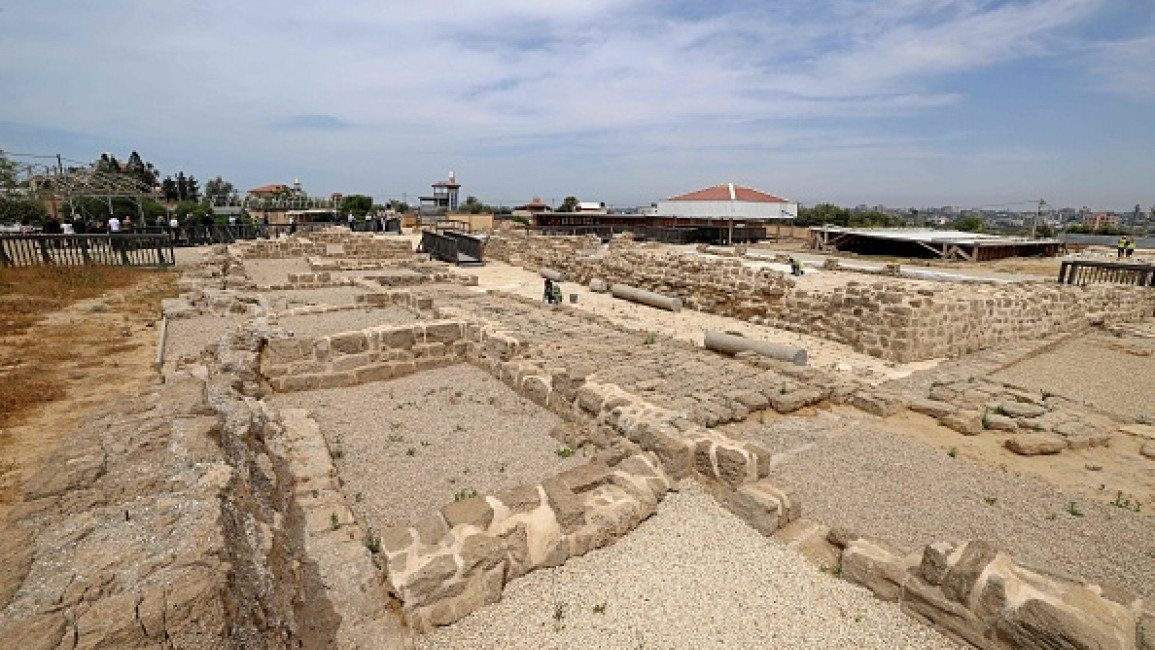

The Gaza Strip's historic status as a go-between of empire and civilisation is one that dates back tens of thousands of years.
Witnessing the rise and fall of the Pharaonic, Greek Canaanite, Roman, Byzantine, and Islamic civilisations, the region has long been a trove of archaeological wonders, storing the secrets of times gone by.
There are at least 45 archaeological sites in Gaza, including mosques, churches, palaces, tombs and markets that date back to the Stone Age and beyond, each of which houses stocks of precious artefacts, stones and gems.
Note, this figure fails to account for the hundred or so period properties in the coastal enclave, some of which date back to the Mamluk era.
"Gaza is a large archaeological site full of cities, walls, forts, and artefacts, and yet excavations do not exceed one per cent of the treasure located underground"
Despite the clear archaeological significance, governmental efforts to uncover, restore and protect these sites remain almost non-existent. Be it a lack of financial support or issues related to Israel's occupation, the will of state impetus is severely lacking.
As a result, most discoveries are found by chance.
In a rare feat of luck, this April, Nidal Abu Eid, a farmer from Khan Yunis in Gaza discovered a 4,500-year-old statue of the Canaanite goddess "Anat" whilst cultivating his land.
Speaking to The New Arab, Nidal told us that he "found it by chance while going about my business in the fields. It was initially muddy but after washing it, I realised I was holding an artefact of great archaeological value."
Nidal proceeded to report the object to the Hamas-run Ministry of Tourism and Antiquities for inspection. Upon closer look, the statue, made of limestone, depicts a head with snakes wrapped around its crown.
The 22-centimetre-tall statue is believed to represent the Canaanite goddess Anat, estimated to be dated around 2,500 B.C according to Jamal Abu Rida, the director-general of Gaza's Ministry of Antiquities and Cultural Heritage.
"Anat was the goodness of love, beauty, and war in the Canaanite mythology," Abu Rida told The New Arab.
But this isn't the first artefact discovered by luck in the Strip. As recently as February, Gazan builders discovered a 2,000-year-old Roman Cemetery in Beit Lahia whilst preparing to build a new Egyptian-funded city.
In January, the Ministry opened a reconstructed old Byzantine church in Jabalia refugee camp in the north of the Gaza Strip, turning it into a public museum after four years of work.
According to historians, the Byzantine church was established in the Gaza Strip around 1,700 years ago and served as property of the area's Royal Family.
“All these discoveries of archaeological sites indicate that the Palestinians, descendants of the Canaanites, are the real owners of this land. These excavations refute the Zionist claim that we are a people without a land,” Abu Rida said.
"Such archaeological discoveries will revive domestic tourism in the Gaza Strip and introduce people to the history of their region and its historical and geographical importance," the official said.
However, Abu Rida complains about the lack of necessary economic capabilities to excavate and restore more antiquities and archaeological sites.
Moreover, the instability of the political situation due to Israel's blockade on the Gaza Strip, as well as the impact of war has contributed significantly to "neglecting this treasure trove that we have," Abu Rida says.
"Gaza is a large archaeological site full of cities, walls, forts, and artefacts, and yet excavations do not exceed one per cent of the treasure located underground," the official explained, pointing out that there are dozens of archaeological sites that have not been discovered yet.
So far, only three archaeological sites in Gaza have been protected by the government: Tell Umm Amer “Saint Hilarion Monastery” in the middle of the Strip, Tel “Zo’rob” in Rafah city, and the Byzantine Church in Jabalia, each of which were restored with the help of funding from international bodies.
However, Sundus al-Nakhala, a Gaza-based activist and member of the Canaan Youth Team - an NGO that records ancient landmarks through data processing - told The New Arab that a number of sites lack protection, with many of the sites used for refuse, or temporary housing facilities.
“About 31 archaeological sites in the Gaza Strip have disappeared as a result of urban expansion and continuous encroachments, as well as their [the Ministry of Antiquities and Cultural Heritage] failures to register them as archaeological sites to protect them,” she said.
"What makes the matter worse is the lack of laws protecting antiquities, which has caused many antiquities from the Bronze Age to be stolen and displayed on the black market, so the task of preserving antiquities is especially difficult in the absence of the necessary government support, al-Nakhala complained.
As such, attempts to revive the ancient landmarks remain largely limited to individual initiatives that operate in isolation.
Jawdat al-Khudari, a Gaza-based businessman, launched an initiative to restore and revive old houses dating back to the Mamluk, Ottoman, and British eras, and bought a number of ancient houses with the aim of restoring them and turn them into museums.
"We are trying to save the heritage of Gaza which has always been a corridor for the world's merchants, kings and tsars" al-Khudari told The New Arab.
But, as Jawdat told us, the restoration process is not easy. "It takes a lot of time and effort to restore these properties, with some cases lasting years."
He added that "Preserving our heritage and history is not limited to official and governmental institutions. Every individual in society is required to protect our heritage and historical identity."
Sally Ibrahim is The New Arab's correspondent from Gaza








 Follow the Middle East's top stories in English at The New Arab on Google News
Follow the Middle East's top stories in English at The New Arab on Google News


